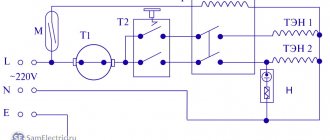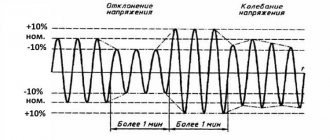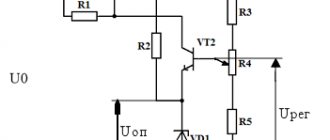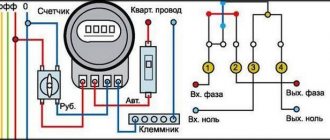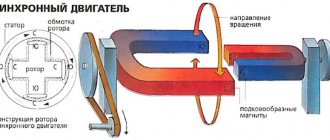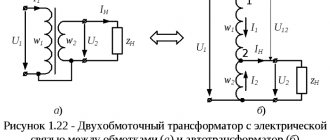Owners of private houses and apartment owners left without hot water due to seasonal renovations solve this problem on their own. To do this, they buy and install special equipment. Specialists from the Kvanta + online store from Tyumen can help them. Managers will tell you how an instantaneous water heater or boiler works and will suggest a suitable model from a trusted manufacturer.
A instantaneous water heater is an alternative source of hot water.
General information about instantaneous water heater
This is a high-power device, not equipped with a storage tank, that increases the temperature of the liquid as it passes through the heating module. The equipment is a structure with a heating element inside or outside. In addition to the heater, the device includes sensors and thermostats to control the operating mode.
Main types
The classification of main devices looks like this:
- Gas. They are chosen mainly by owners of cottages and apartments equipped with AGV. Such heaters are inexpensive, their maintenance is simple, although this requires a trained specialist, and energy prices are low. However, they require the installation of effective ventilation, are explosive due to technical faults and are demanding on water pressure - at least 1.5 l/min.
- Electrical. The most popular among buyers. They are chosen for their ease of installation and operation, and the availability of several configuration modes.
- Diesel, wood and coal. Such devices are not in demand due to inconvenience in operation.
Instantaneous water heater – electric model.
Review of the best offers on the market
Low price, compact size and the absence of the need to change the electrical wiring of the house distinguish single-phase water heaters.
Today, a huge number of domestic and foreign manufacturers are engaged in the manufacture of instantaneous water heaters.
The most popular companies on the domestic market - Atmor, NIBE-BIAWAR, Clage, Redring, Stiebel Eltron, BOSCH, ELECTROLUX - produce products aimed at the European consumer.
Even low-power instantaneous water heaters produced by them will be able to provide homeowners with hot water of the same quality in both summer and winter.
Let's study the products of these companies in more detail.
- Israeli manufacturer Atmor. The main models are non-pressure water heaters. The Inline series are devices with a power of 3-8.7 kW. Their cost is lower than that of other companies due to the presence of electronic control instead of hydraulic control. At the same time, this company also has devices with a power of 7 and 12 kW. They can be connected to both single-phase and three-phase networks. Cost: 4700-15100 rub.
- NIBE-BIAWAR (Poland). Oscar model with a power of 5 kW - without a bulb, but has a spiral. It provides fast water heating and less heat loss. There is a check valve at the inlet. Simple design. The cost of this model is 4500 rubles.
- Clage (Germany). CRH series: automatic pressure regulator, copper heating element, suitable for bathrooms (protection class IP25). Price: from 11,800 rub.
- Redring (UK). The Powerstream model – without a heating flask, has a “snake” with a diameter of 14 mm with two copper heating elements. Convenient design – flat design. Price: 9950-18400 rub.
- Stiebel Eltron is a German manufacturer. Stiebel Eltron devices - power 3-8.8 kW. Made with German reliability - a sealed flask with a heating element, copper supply tubes, brass adapters. Price: from 65,800 rub.
- BOSCH (Germany). All models are certified and equipped with reliable protection devices. Distinctive features of the ED series: two copper heating elements, maximum pressure - 10 bar, power 4.6-6 kW. Price: from 12900 rub.
- ELECTROLUX (Sweden). Feature: spiral heating elements. Model NPX Sensomatic – 7 stages of temperature control, touch control, heating element made of stainless steel. Price: 16500-26000 rub.
Please note that devices from different manufacturers, identical in technical parameters, may differ in units of measurement
- power;
- component materials;
- device control system;
- duration of the warranty;
- ease of installation;
- safety.
Also take into account the technical capabilities of your home: pressure in the water supply network and the load on the electrical wiring. If the manufacturer has provided for everything, a high-quality instantaneous tap water heater will serve you for many years.
The only responsibility lies with you to use the device correctly, and carefully reading the instructions will greatly help you with this.
Design features
The main feature of instantaneous water heaters is the absence of a storage tank to create a supply of hot water and a system for maintaining the temperature inside.
Types of heating elements
Types of heating module for electric models:
- A bare coil placed inside a plastic tube. In this case, the case is small in size, has low heating and low performance. After turning off the power, the liquid cools quickly, preventing deposits from forming on the inner surface.
- Tubular electric heater, or heating element. It is the same spiral placed in a copper or brass tube with quartz sand as an insulator. From the point of view of electrical safety, such models are reliable, but slow cooling of the water contributes to the formation of scale, which settles on the heater itself and eventually leads to its burnout.
Gas instantaneous water heaters are often combined with 2-circuit heating boilers. They have a burner installed as a heating element.
Instantaneous water heater for the bathroom - gas modification.
Flow sensor
The sensor can be electronic or mechanical. Serves for timely supply of power to the water heater at the beginning of liquid movement. Equipment equipped with such a device operates automatically. There are devices where a membrane is installed. Their disadvantage is that at low pressure it does not always work, so the device does not turn on.
Overheat sensor
Necessary to turn off the unit when the temperature rises above the set one. Most often, values from +60 °C are chosen as the limit.
With the sensor, the manufacturer installs a warning light that notifies the user that the water heater is not working.
Control type
The controls are used to change the operating parameters of the device; they represent several regulators. They operate using a hydraulic or electronic circuit.
In the first case, the heating element is turned on immediately at maximum power, regardless of the set mode. In the second case, multi-stage modules with a smooth change in heating power are used. For this purpose, sensors and a microprocessor are used, which reads the information and makes adjustments when the deviation from the nominal value is more than 1 ° C.
Instantaneous water heater with electronic control circuit.
RCD
The protective shutdown device is located outside the body of the instantaneous water heater and serves to open the circuit in the event of leakage currents being detected. This ensures that the owner of the premises is protected from electric shock in the event of a zero break or a phase breakdown on the housing or a grounded pipe. Most often, residents lay a separate line to power a powerful water heater, to which they connect an RCD.
The device itself does not protect equipment from power surges or short circuits. Therefore, a circuit breaker or fuse is necessary in such a circuit.
Comparison of characteristics
Weight and dimensions
According to these parameters, the winners are, of course, devices with instantaneous water heating. Their sizes are compact and their weight does not exceed 2 kg. They will not be noticeable even in a standard shower stall, since their sizes range from:
- height - 14−17 cm;
- width - 30 cm;
- thickness up to 10 cm.
Although boilers of this size can be found, their total capacity does not exceed 10 liters. This volume is not enough even for 1 family member. Therefore, they must be installed at least 50 liters, and the dimensions will be impressive. In addition, boilers up to 120 liters can be installed on the wall. If the volume is larger, then the device is mounted on the floor. In this case, it can be installed in the attic, which will significantly save space.
But they win in size
Device performance
If a boiler is installed, its heating element is already designed for a certain volume of water, so when choosing a model you need to pay attention only to the dimensions of the tank. Sizes must be chosen according to the needs of the family
The optimal boiler sizes for different numbers of people will be as follows:
- 1 person - up to 50 liters;
- 2 - up to 80 l;
- 3 - up to 100 l;
- 4 - up to 120 l;
- 5 - up to 140 l.
As practice shows, for a shower stall you will need a heater of 5-8 kW, for a faucet in the kitchen - up to 5 kW. If you need to supply several points in the house, then the total quantity must be at least 12 kW.
Economical use
Many users, wondering which water heater to choose - storage or instantaneous, do not even consider the latter when they find out how much electricity it uses. Although if you look into this issue, you can understand that heating a certain amount of water requires the same amount of energy regardless of which heating element is used - flow-through or storage.
Based on this, we can conclude that the boiler consumes more energy, since it constantly maintains the desired temperature. It will use approximately 1−2 kW additionally every hour to maintain the temperature.
If we talk about the price of boilers and instantaneous heaters, the former cost 2-3 times more. Although it all depends on the power of the model and its manufacturer. Preventative maintenance for instantaneous heaters is also more economical, since the filter does not need to be replaced more than once every few years.
The boiler needs constant descaling and replacement of the magnesium anode. If this is not done, the water heating time will gradually increase, and the device itself will most likely fail. But even with regular maintenance, boilers rarely last more than 10 years, which cannot be said about flow-through heating elements. They work much longer.
Installation nuances
Installing an instantaneous water heater is easy. There are special mounts for wall mounting. It's easy to do. A hose with a centralized water supply is connected to the inlet, and the outlet is connected directly to the mixer.
If you install powerful partings of 5 kW or more, then you need to connect them directly to the panel. The required voltage in this case is 380 V.
Boilers must be installed on special anchor bolts. The device is connected via an RCD to a specially designated socket with grounding.
In both cases, it is necessary to understand that it is better to install a storage or instantaneous electric water heater above the sink. Thus, there will be free access to management. If the boiler is installed in the attic, every time you need to change the temperature regime, you will need to climb up.
How the device works
The stores offer flow-through models of water heating units of 2 varieties. Any of them works as follows:
- Water enters the heating chamber.
- The flow sensor is triggered and closes the electrical circuit, including the coils.
- Powerful heating elements increase the temperature of the liquid to the set values.
- Through a tap, mixer or spout, boiling water flows to the dispensing point.
- If the set parameters are exceeded, the automation switches off the device.
Scheme of operation of an electric instantaneous water heater.
Pressure type
The devices are used to organize several water collection points. Therefore, apartment owners cut them into a riser through which cold water flows, and in suburban buildings - after installing a pumping station. Pipes intended for hot water lead to the points of consumption.
Such a device turns on automatically when it starts working, based on a signal from the sensor. Within 1-2 minutes the system reaches the specified temperature level. If an instantaneous water heater is installed as a backup, a sensor is included in its circuit that ensures switching from one type of water supply to another.
Pressure water heaters are designed to serve several water intake points.
Non-pressure
Such devices are not connected directly to the water supply complex. They serve only 1 parsing point. The heating module receives liquid from a mixer or tap already installed by the owner.
There is no main pressure inside the housing; the pressure is approximately equal to atmospheric pressure. The outlet is provided by its own spout, shower or other device.
Gravity heaters are of the following types:
- mounted in one housing with connection to the sink faucet;
- in the form of a nozzle for the mixer.
A non-pressure instantaneous water heater connected to the sink faucet.
Storage heater installation
For those who are interested in how to install an electric storage water heater, it is important to know that when installing such equipment, a safety check valve is required. It will ensure the correct operation of the unit and reduce the likelihood of emergency situations.
A safety check valve for a water heater prevents water from flowing out of the heater, and also, if the maximum pressure in the tank is exceeded, it discharges excess liquid into the sewer through a drain outlet
The water inlet pipe of the water heater is marked in blue to avoid errors when connecting. During installation, a safety valve is installed on it in compliance with the tightness requirements (FUM tape, flax tow, etc. are used). To further connect the water heater to the water supply, use a flexible hose or a hose in combination with pipes (steel, polypropylene or metal-plastic structures are selected according to the type of existing pipeline. The so-called safety group (non-return safety valve) should work flawlessly, so if you use an inexpensive installation kit , it is better to purchase this element separately, choosing high quality.
During self-installation, the sequence of installed elements in the direction from the inlet pipe of the water heater will be as follows:
- tee,
- a ball valve, which is used to drain water and is connected to the side outlet of the tee,
- safety valve with drain outlet,
- shut-off valve to shut off the system,
- pipeline.
This is a basic list of elements for installing a water heater in an apartment or private house, which can be supplemented if necessary:
- reducer (a device that reduces the inlet pressure to the nominal value for the water heating device),
- filter (if the water in the pipeline does not meet the requirements, for example, if there is a large amount of insoluble impurities and salts that form deposits on the surface of the tank and on the heating element).
After completing these operations, all that remains is to connect the hot line to the boiler. To do this, a shut-off valve is mounted on the corresponding pipe of the water heater so that it can be turned off. The shut-off valve is connected to a flexible hose to drain the heated liquid.
The boiler is ready for use
Installation and connection rules
In order to connect the water heater, you need:
- Select a location for tapping into the water supply. This should be the point before the pipes branch. This makes it possible to fill the entire hot water supply system with boiling water and supply water to several distribution points.
- Install shut-off valves in front of the entrance to ensure emergency closure of the main line.
- Install a coarse filter in front of the device.
- Install the device and fill the system with water without turning on the heating. This will allow you to check the tightness of the connections and remove air to avoid the formation of plugs.
- Connect the device to electricity. If the power of heating elements does not exceed 12 kW, then the manufacturer provides for the use of a 220 V household network. More powerful units will require a 380 V power supply and the help of a professional electrician.
Gravity heaters are connected to a faucet or selected break point, and the power cord is plugged into an electrical outlet.
No additional protective equipment is required, because the spirals of such devices do not consume more than 4-7 kW.
Nuances of operation
Despite the simplicity of the device and ease of maintenance, units for instantaneous water heating require the implementation of several rules:
- It is recommended to install the equipment as close as possible to the liquid distribution point. This will avoid losses during transportation through pipes.
- Install protective filters against hardness that will reduce the formation of scale.
- Do not install the device in an unheated room, because the water remaining inside the case will freeze and tear it apart from the inside.
- When connecting to metal pipes, a dielectric bushing must be used. This way it will be possible to avoid breakdown to a grounded structure in the event of a short circuit of the heating element.
- A water heater located in a bathroom must have reliable splash protection.
- The equipment is started on the line with reduced pressure by setting the thermostat to the middle position.
- Disconnect the idle device from the network.
- Do not replace components provided by the manufacturer with others. This is due to the fact that the sensors and microprocessor are configured to the calculated standards, and changing them will lead to incorrect adjustment.
Automatic models remember the latest data. Therefore, before turning it on again, you need to check the set mode.
Automatic models of instantaneous water heaters are equipped with a function for storing the latest data.
Advantages and disadvantages
Instantaneous water heaters have many advantages during operation, including:
- providing housing with hot water in emergency situations (repairs or accidents on central water supply networks);
- small size does not require much space for installation even in a small room;
- limiting electricity consumption to the required volume of heated liquid;
- no restrictions on the amount of water used;
- lower cost compared to boilers;
- Frequent cleaning is not needed, because... scale is practically not deposited on the body, and bacteria do not multiply in the absence of moisture.
Available disadvantages:
- The area of application of instantaneous water heaters is domestic needs, because a medium-power device increases the temperature only to +40…+50 °C;
- increased requirements for electrical wiring;
- Long-term use without interruption increases energy consumption.
The company Kvanta + in Tyumen will offer a ready-made solution for providing hot water to a cottage, cottage or apartment. The company's product range includes the best models of instantaneous water heaters: Termex and Electrolux.
